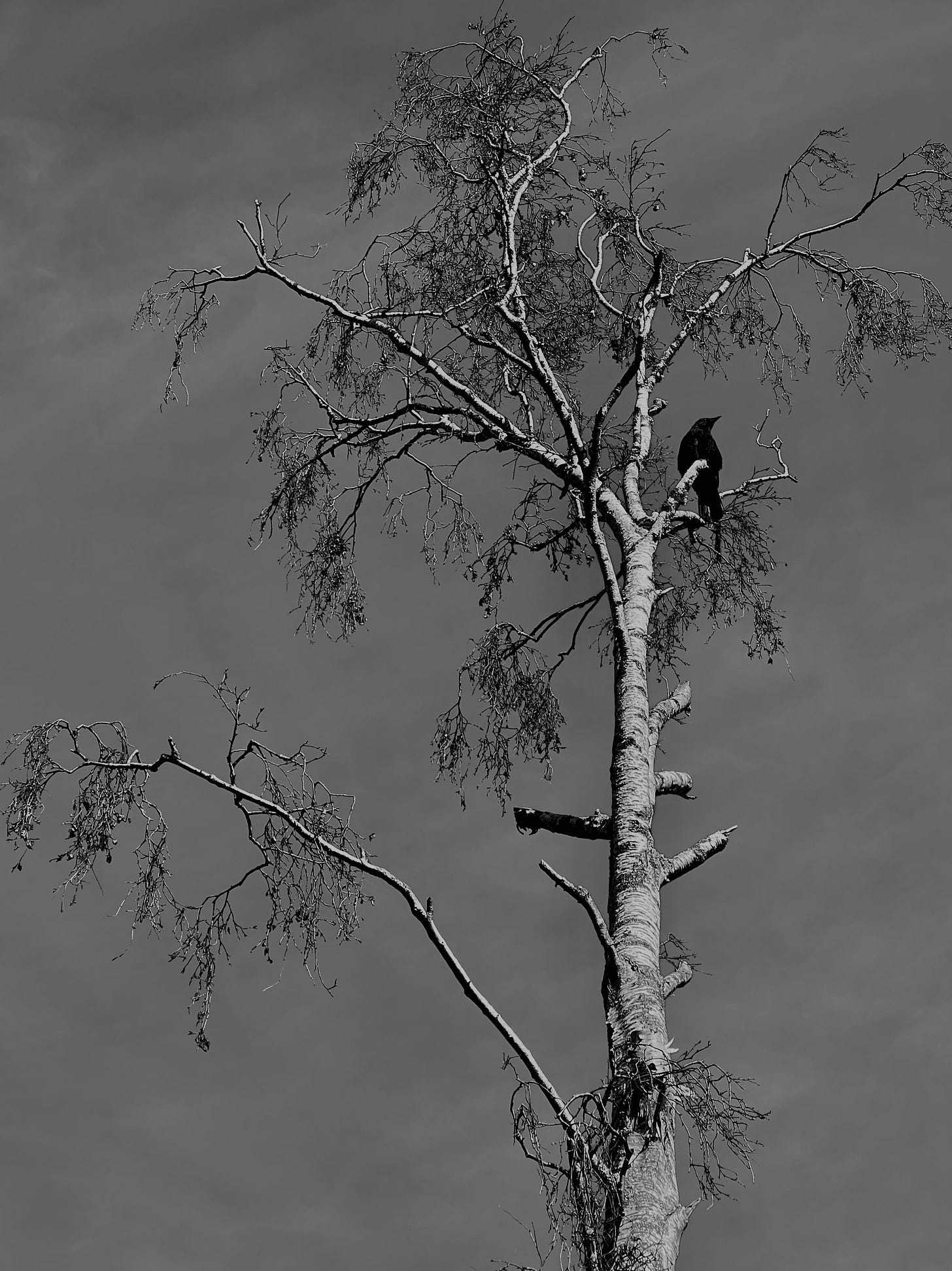Wherever I went in the past few weeks, the trees took centre stage. Many of my most familiar routes are now glowing with autumn beeches. The oldest trees reach more than 40 metres tall, with huge, domed crowns, supporting a dense mosaic of leaves.
Beeches seem such an integral part of the Gloucestershire landscape that I was surprised to discover they are considered truly native in the UK only in southeast England and southeast Wales.
They are among the few deciduous trees that may hold on to their spent leaves over winter (a trait known as marcescence). It seems to be the less mature trees or branches that retain their leaves, though it is unclear why they do so. It makes beech a popular hedging plant – if clipped it doesn’t shed its leaves, so creating a year-round screen.
I was intrigued how this particular patch of leaves seemed to be ahead of its neighbours in the transition towards winter.
I can never walk past a tree of such stature as this veteran tulip without pausing to admire it, especially when it is set against a backdrop of subtle autumn tones.
Tulip trees are native to eastern North America but prized in many ornamental gardens in the UK. This particular one, with a girth measuring 6.67 metres in 2021, is thought to have been planted at the National Trust’s Stourhead estate more than 230 years ago. Its distinctive four-lobed leaves were just beginning to turn butter-yellow, an eye-catching show that may last for several weeks.
Like others in the magnolia family, tulip trees bear spectacular flowers in spring: tulip-shaped, yellowish-green, marked inside with orange, and adapted for pollination by beetles.
This ginkgo tree was one of the first of its kind to be planted in the UK, in the 1700s, and one of the few trees remaining at Kew from the original botanic garden.
Native to China, ginkgos are the sole survivors of an ancient group of trees that predate dinosaurs. Sadly, deforestation means they are now endangered in the wild, though they are widely cultivated. Their distinctive fan-shaped leaves – cascades of yellow in autumn – are similar to those of maidenhair ferns, hence their alternative name: maidenhair trees.
Each ginkgo tree is either male or female (a dioecious species). Males have pollen-producing floral spikes, while females bear fruit-like structures containing large seeds. When the seeds’ fleshy coats decay, they smell very bad, which is why male plants are often chosen for gardens. This particular male tree, however, caused a stir when it suddenly began to grow fruit. It turned out that a female branch had been grafted on to the tree when it was young, and it was that branch that was now producing fruit.
At 265 years old and 15 metres tall, this tree is just a baby – ginkgos can reach more than 40 metres tall, and the oldest recorded specimen is 3,500 years old.
The light catching the copper tinges of this swamp cypress by Kew’s Palm House Pond was the thing that drew my eye, but then I noticed the miniature forest of knobbly protrusions from the ground along the water’s edge.
The swamp cypress (also known as the bald cypress) is one of the few deciduous conifers. Native to the USA, it was introduced to Britain in 1640. It does well in low lying, waterlogged areas, such as in the Florida Everglades. In Britain, it has been planted in formal gardens and parks, where it casts beautiful reflections of its autumn finery across ornamental lakes and ponds.
The characteristic knobbly ‘knees’ (properly called pneumatophores), which poke up through waterlogged soils or sometimes from open water, are part of the tree’s root system. Various theories have been proposed for their function: bringing oxygen to the roots, improving stability and/or accumulating organic material.
I was hoping for some soft, autumn light to photograph trees in the New Forest last weekend, but it turned out to be more like summer. With limited time, I just had to adapt to the prevailing harsh sun (and swarms of midges).
The New Forest is a special place for many reasons, not just the extent of magnificent mature trees. It is also one of the few places I can visit fairly easily where dead trees are just left, everywhere, not chopped and tidied, declared hazardous and not fit to be seen. This silver birch stood in a small stand of otherwise thriving trees on an area of open heath.
Something – ants, perhaps – on the ground among the heather, was attracting the attention of a party of crows. From its vantage point in the dead silver birch, this individual surveyed the activity and soon joined the feast.
I don’t usually go in for much tinkering with images post-production, other than small adjustments to render them truer to what I saw. I did, however, rather like the drama of this image in black and white.
In the heart of the New Forest, the woodland floor harbours a treasure trove of fallen branches, rotten stumps and dead trees. As the wood decays, nutrients are recycled back into the soil, sustaining the entire woodland ecosystem.
Once I got my eye in, I was spotting fungal fruiting bodies at every step, such a colourful array of shapes and forms, many too tiny to photograph without a macro lens and many larger ones rather ravaged by slugs.
Fungi are the principal agents of wood decay, breaking it down with their enzymes. The softened wood often provides food and shelter for beetle grubs; about 650 UK beetle species are thought to depend on deadwood at some point in their lifecycles.
I came across several logs sprouting these purplish-brown bonnets. They seem quite common in the mild, damp conditions of autumn but are worth admiring nevertheless.










